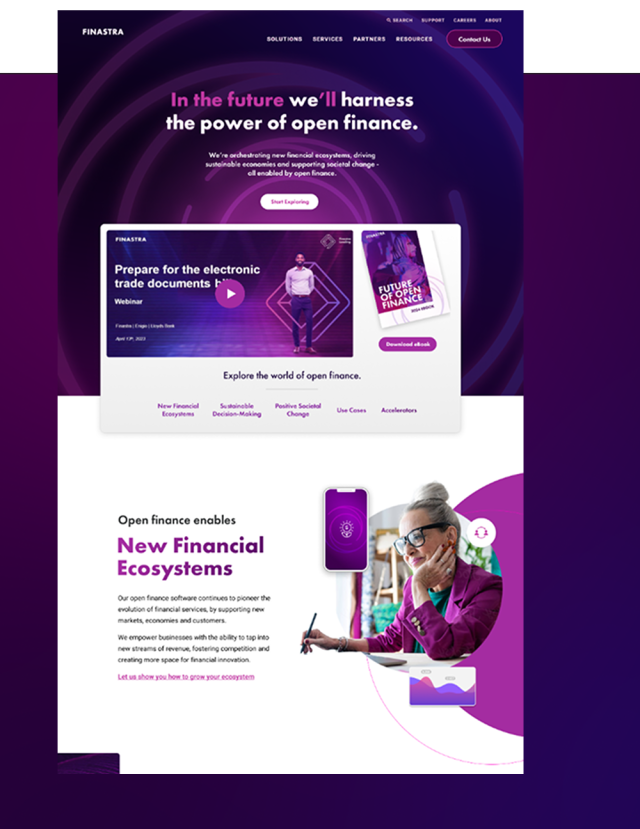Innovation Hub
Strengthening Brand Voice in Open Finance for Finastra

Open banking FinTech innovator
19%
Increase in contact form submissions
55%
organic traffic lift
Finastra, a global fintech leader, sought to enhance its digital presence and positioning as a thought leader in the open banking space. By offering curated video content, personalized account features, and an enhanced user experience, Finastra could better engage its audience and elevate its reputation in the fintech industry.
As one of the largest fintech companies in the world, Finastra is known for its innovation in financial software solutions. Serving financial institutions of all sizes across various domains like lending, payments, and universal banking, Finastra is pushing the boundaries of open finance.
With the increasing adoption of Open Finance and Open Banking at the forefront of financial industry discussions, Finastra recognized the need for a digital hub to showcase their thought leadership. They aimed to provide an immersive, content-rich platform to engage fintech leaders, foster meaningful conversations, and build deeper connections with their audience.
Thought Leadership
Tuning In to Transform Finance
Finastra needed to create a digital hub for its thought leadership content, including dynamic video on open banking insights and trends. This hub aimed to enhance user engagement and support concurrent Open Finance campaigns by offering advanced UX and design capabilities to capture and convert users effectively.
To address Finastra’s goals, an innovative digital experience named "Finastra.TV" was developed, built from the ground up on the Drupal platform. Leveraging an integration with Brightcove, Finastra.TV delivers compelling video content across multiple topic-specific channels. Each channel showcases insights from Finastra and highlights thought leaders throughout the fintech industry. This allows users to engage with, save, and follow curated, high-quality content tailored to their interests.

Engaged Experience
Elevating the Fintech Experience
Alongside Finastra.TV, Finastra’s main site continues to undergo significant UX and visual design upgrades. These enhancements ensure that the storytelling and experience on Finastra.com matches the interactive, personalized campaigns being rolled out, creating a seamless experience across platforms.
The iterative visual and UX design improvements on Finastra.com have consistently raised the bar for user expectations, but they are only the beginning of a larger effort to improve engagement, interaction and performance. With the goal of ever more visually striking and personalized experiences, we and Finastra continue to work to ensure that every site visitor’s interaction feels seamless and purposeful.

Not ready? See how we approach improvement engagement.
